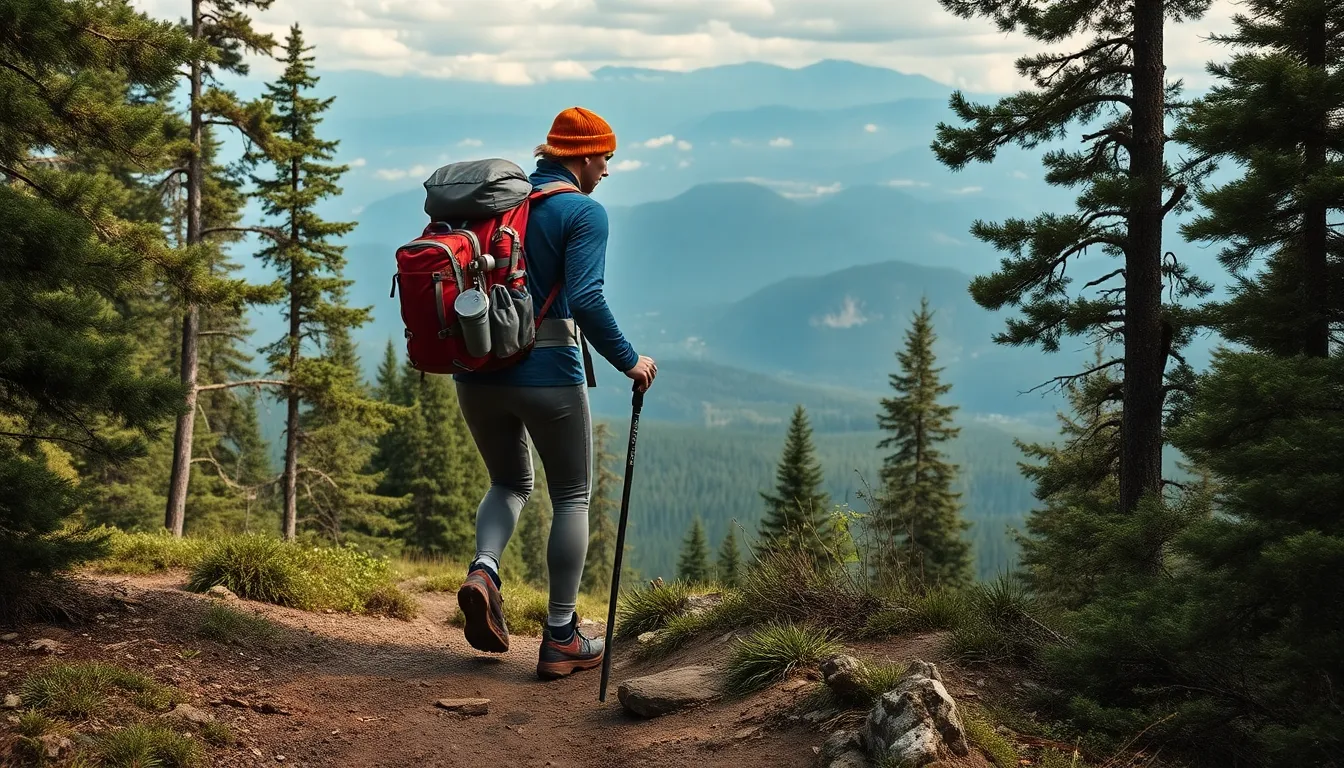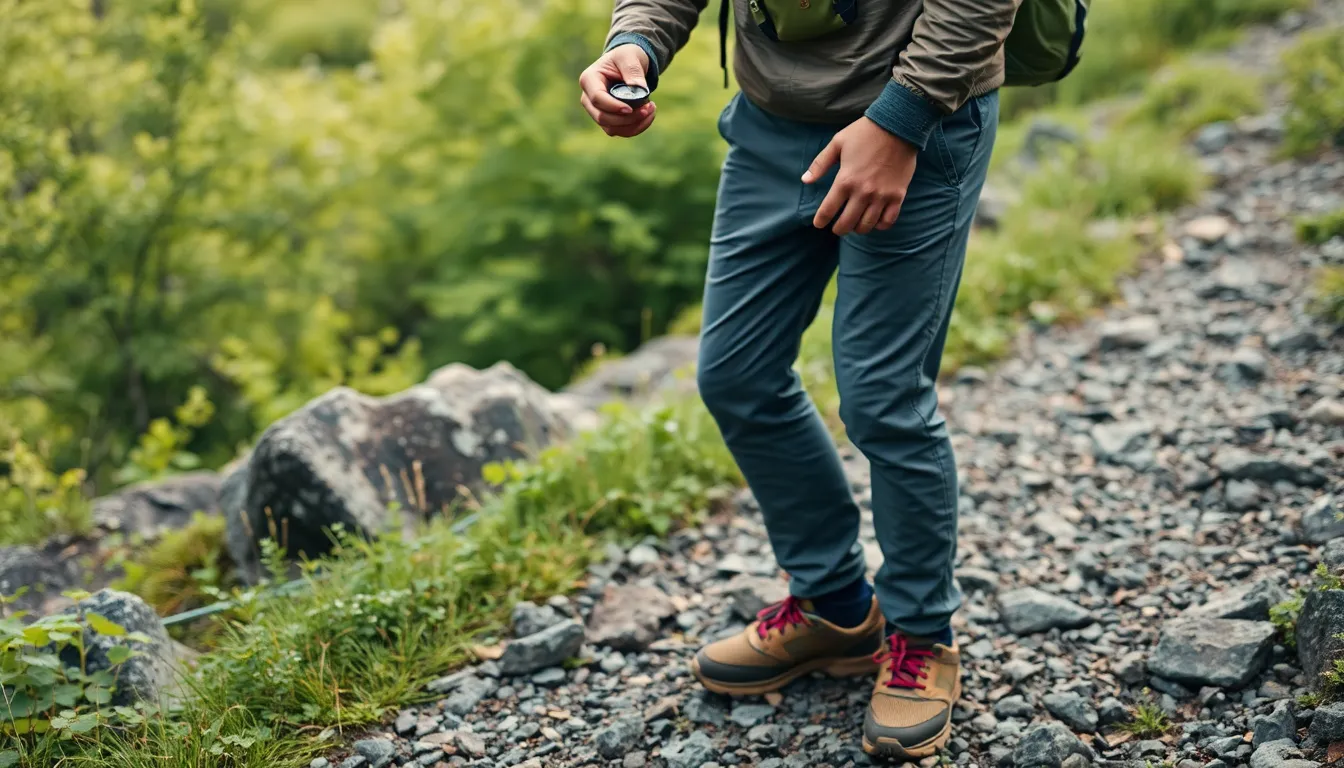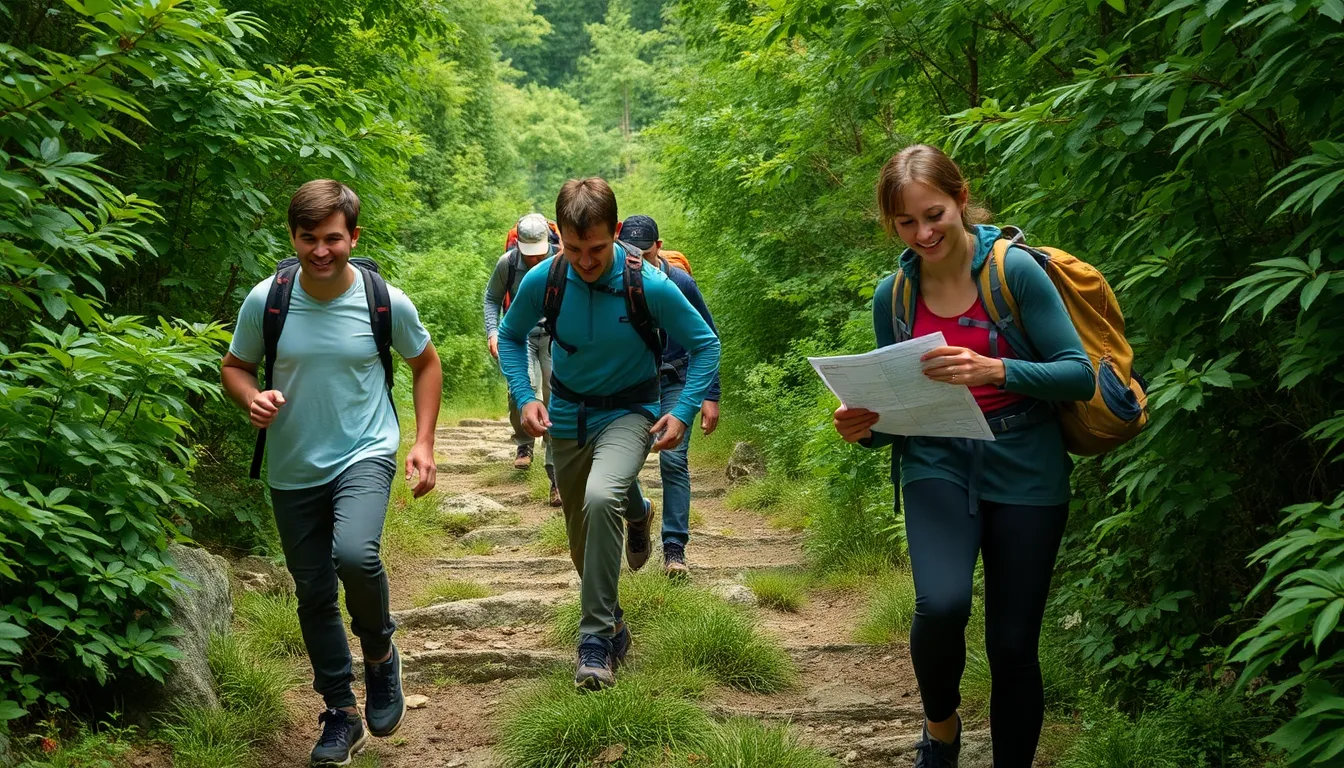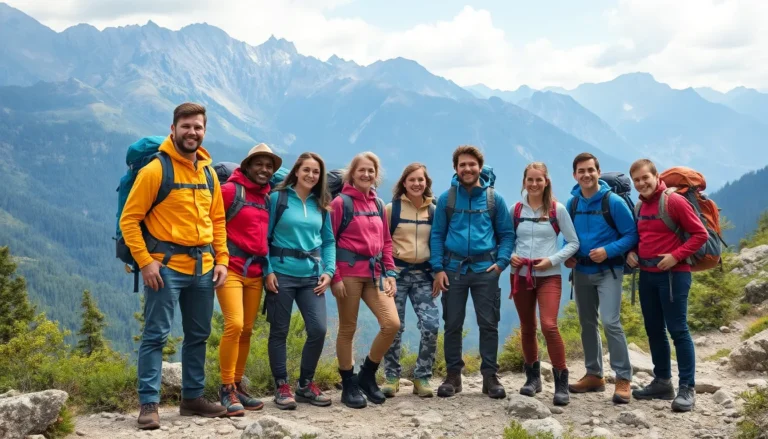When it comes to tackling life’s adventures, having the right gear can make all the difference. Whether you’re a weekend warrior or a seasoned pro, the essentials can transform a mediocre outing into an unforgettable experience. Imagine trying to hike a mountain without proper footwear—it’s like trying to cook a gourmet meal without a chef’s knife. Spoiler alert: it won’t end well.
Table of Contents
ToggleOverview of Gear Essentials
Having essential gear significantly impacts outdoor adventures. Proper equipment enhances safety, comfort, and enjoyment. Key items vary based on activities but typically include clothing, footwear, navigation tools, and hydration systems.
Clothing choices include moisture-wicking layers and weather-resistant outerwear. These options help regulate temperature and protect against environmental elements. Footwear, such as hiking boots or trail shoes, provides necessary support and traction. They can prevent injuries and improve mobility across diverse terrains.
Navigation tools like maps, compasses, and GPS devices guide explorers through unfamiliar areas. These instruments keep adventurers oriented and informed, reducing the risk of getting lost. Hydration systems, including water bottles and hydration packs, ensure that individuals remain properly hydrated during outings. Staying hydrated enhances performance and overall well-being.
Other important gear includes first aid kits, multi-tools, and camping supplies. First aid kits address potential injuries quickly. Multi-tools offer versatility, allowing users to tackle various tasks efficiently. Camping supplies, such as tents and sleeping bags, provide comfort during overnight trips.
In short, prioritizing gear essentials contributes to a successful adventure. Selecting the right equipment fosters a positive experience in the great outdoors. Whether setting out for a casual day hike or embarking on a longer trek, preparation through adequate gear is essential for every adventurer.
Essential Categories of Gear


Selecting the right gear enhances any outdoor adventure. Key categories of gear include clothing and footwear, tools and equipment, and necessary accessories.
Clothing and Footwear
Clothing plays a critical role in outdoor excursions. Moisture-wicking layers aid in temperature regulation, while weather-resistant outerwear offers protection against elements. Choosing supportive footwear prevents injuries and improves mobility on challenging terrains. Insulated jackets provide warmth in cold conditions, while breathable fabrics keep comfort high during physical activities. Dressing in layers allows for adjustments based on fluctuating weather and activity levels.
Tools and Equipment
Navigation tools ensure adventurers stay on course. Essential items include maps and compasses, which offer reliable guidance where technology may fail. GPS devices also serve as valuable assets, providing precise locations in unfamiliar territories. Multi-tools enhance versatility; they can assist with various tasks ranging from meal preparation to equipment repairs. Additionally, first aid kits are crucial for addressing injuries and ensuring safety during outings.
Accessories
Accessories complete the essential gear checklist. Hydration systems, such as water bladders or bottles, keep adventurers properly hydrated, which boosts performance and well-being. Headlamps or flashlights provide necessary illumination in low-light situations. Personal items such as sunscreen and insect repellent help protect against environmental hazards. Packing a repair kit can address gear malfunctions, ensuring the adventure continues without interruption.
Choosing the Right Gear
Select gear that matches specific outdoor activities. Focus on factors like destination, climate, and duration. Climate affects clothing choices, as cold weather demands insulated layers while warm weather requires breathable fabrics. Consider activity type; hiking gear differs from camping gear. People should also assess personal comfort preferences, like fit and style, to ensure enjoyment during outings. Evaluate any special needs or conditions, such as allergies or previous injuries, to ensure safety and pleasure.
Assessing Your Needs
Start with defining the types of adventures planned. Women’s and men’s gear differ in design and fit, influencing performance. Prioritize lightweight options for backpacking and comfortable footwear for long hikes. Always check local weather forecasts to adjust gear accordingly. Additionally, bring necessary tools, like navigation devices and first aid kits, based on activity risk levels. Participants should also consider if they’ll camp overnight or do day trips, as these choices affect gear selection.
Budget Considerations
Establish a realistic budget before buying gear. High-quality equipment often entails a significant investment, leading to long-term performance. Assess brands that offer warranties, ensuring quality and reliability. Compare prices online and in local stores, as discounts may be available. Look for multi-use items that reduce overall costs. Prioritize spending on essential gear first, like footwear and jackets, before purchasing additional accessories. Reduce costs by considering second-hand items while ensuring they meet required standards.
Maintaining Your Gear
Maintaining gear enhances performance and longevity. Proper upkeep prevents costly replacements and ensures safety during outdoor adventures.
Cleaning and Care Tips
Cleaning gear after each use keeps it in optimal condition. Use mild soap and water on clothing to remove dirt and odors. Footwear requires thorough cleaning, particularly in the treads, to avoid buildup that affects traction. Regularly check equipment and tools for wear or damage; small issues can escalate if ignored. Many manufacturers provide guidelines on specific cleaning methods, which can prolong the life of items like hydration systems and navigation tools. Additionally, storing items in a cool, dry place prevents deterioration caused by moisture.
Storage Solutions
Effective storage solutions play a crucial role in gear maintenance. Utilize bins or shelves to keep items organized, reducing the risk of damage. When storing clothing, consider using breathable bags to maintain their shape and prevent mildew. Footwear works best in a cool environment away from direct sunlight to avoid material degradation. For tools and equipment, invest in designated cases or bags that prevent scratches or breakage. Labeling each container improves efficiency; knowing where everything is ensures quick access during adventures. Prioritize simplicity in storage methods to enhance accessibility and protect valuable gear.




